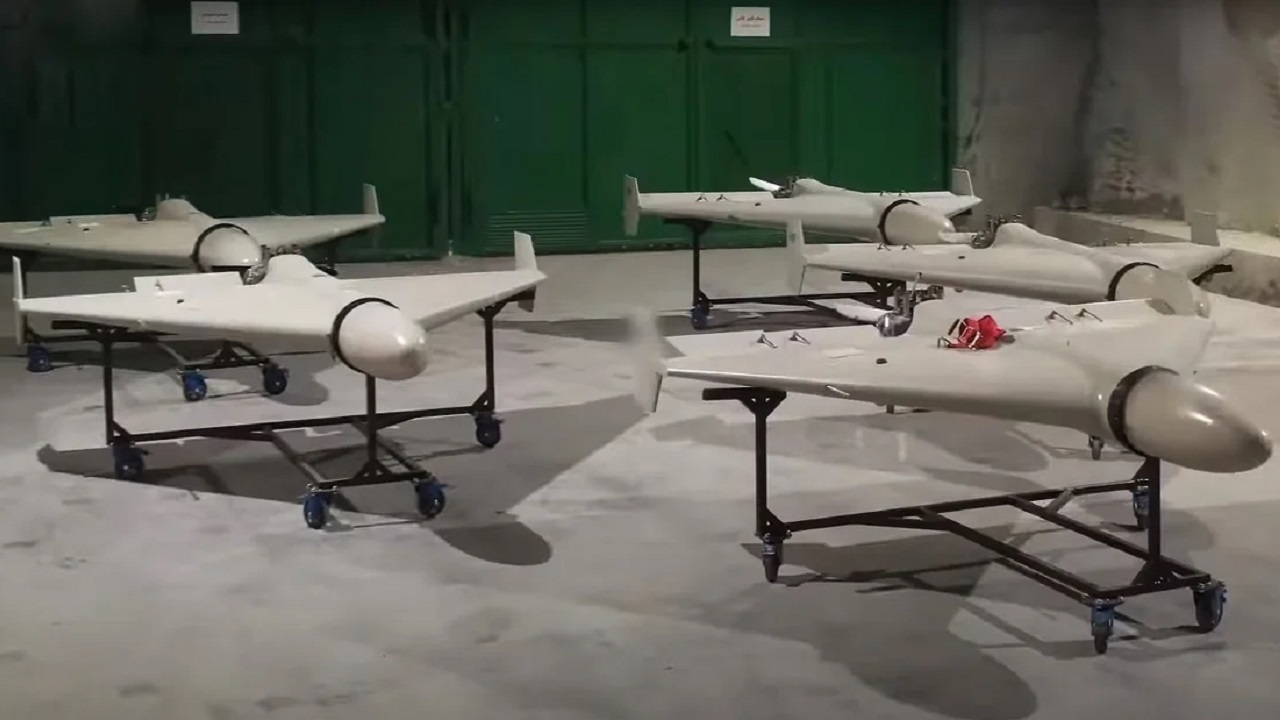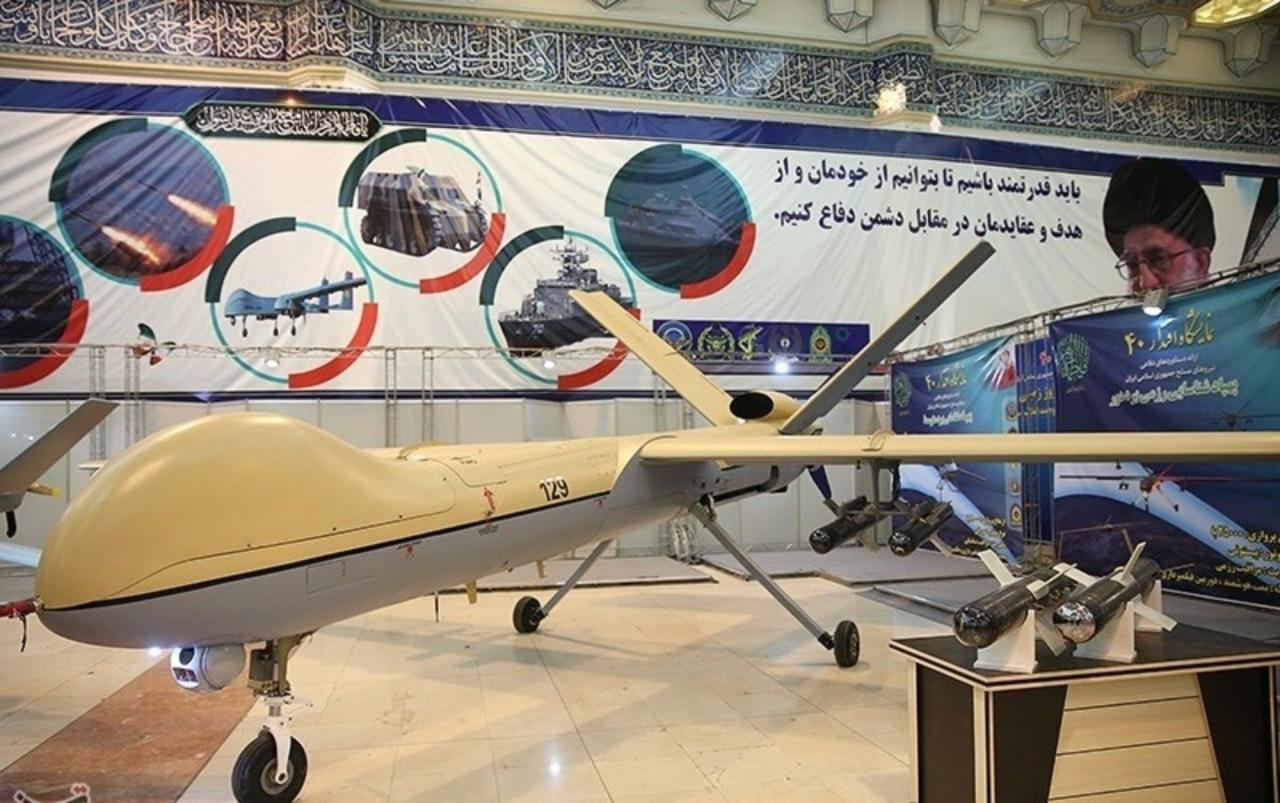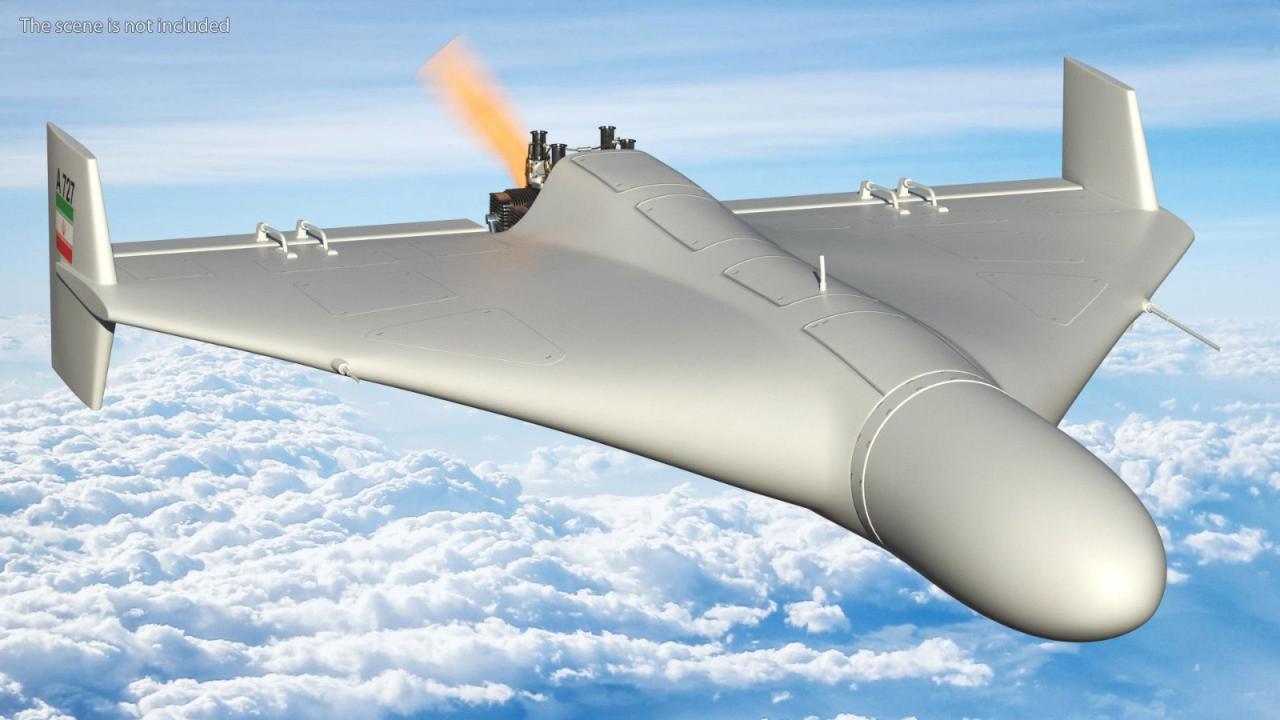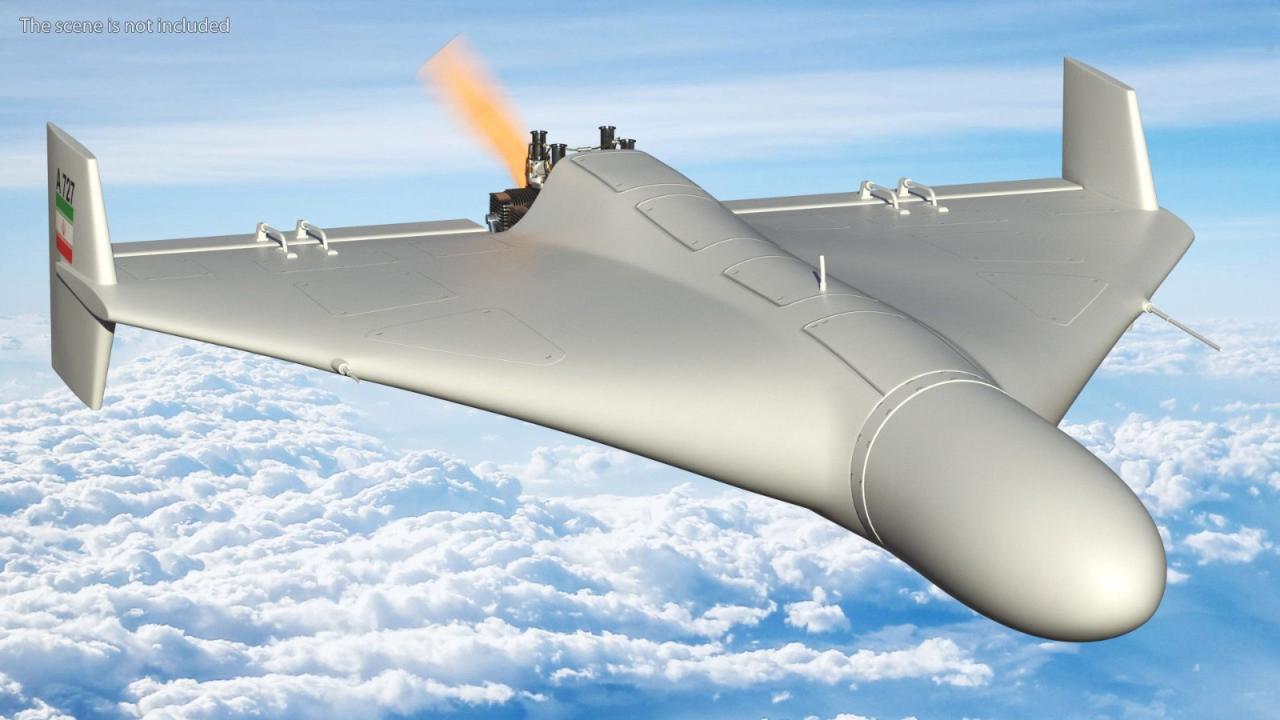Shahed drones, inexpensive and readily deployable unmanned aerial vehicles (UAVs), have significantly impacted modern warfare. Their relatively low cost and ease of production, coupled with their surprising effectiveness, have made them a potent tool in asymmetric conflicts. This analysis delves into the technical specifications, operational capabilities, manufacturing processes, deployment strategies, countermeasures, and global implications of these increasingly prevalent weapons systems.
We will explore their design, functionality, and the strategic and ethical considerations surrounding their use.
From their simple design to their devastating impact, the Shahed drone represents a paradigm shift in military technology. This examination will explore the drone’s technical aspects, operational strategies, and global implications, providing a detailed understanding of this increasingly significant weapon system.
Shahed Drone: A Technical and Tactical Analysis

The Shahed drone, a relatively low-cost, expendable unmanned aerial vehicle (UAV), has significantly impacted modern warfare. Its proliferation and deployment in various conflicts necessitate a comprehensive understanding of its technical specifications, operational capabilities, manufacturing processes, deployment tactics, countermeasures, and global implications.
Shahed Drone Technical Specifications
Understanding the Shahed drone’s physical characteristics and propulsion system is crucial to analyzing its effectiveness and vulnerabilities.
| Specification | Value | Specification | Value |
|---|---|---|---|
| Wingspan | Approximately 2.5 meters (estimated) | Weight (empty) | Approximately 20 kg (estimated) |
| Length | Approximately 3.5 meters (estimated) | Payload Capacity | Approximately 40 kg (estimated) |
| Materials | Composite materials, likely including fiberglass and carbon fiber | Maximum Takeoff Weight (MTOW) | Approximately 60 kg (estimated) |
The Shahed drone’s propulsion system typically consists of a small, relatively low-power internal combustion engine, likely using gasoline or a similar fuel. Fuel capacity varies depending on the specific model, directly influencing flight duration. Flight duration is typically reported to be around several hours.
A schematic diagram of the Shahed drone’s internal components would show the engine, fuel tank, guidance and navigation system (including GPS and inertial navigation), warhead or payload compartment, communication system, and flight control surfaces. Each component plays a critical role in the drone’s operation. The engine provides thrust, the fuel tank stores the propellant, the guidance system ensures accurate navigation, the payload compartment carries the destructive element, the communication system enables remote control, and the flight control surfaces allow for maneuverability.
Shahed Drone Operational Capabilities
The operational capabilities of the Shahed drone determine its tactical utility and effectiveness on the battlefield.
The drone’s range varies depending on wind conditions and payload, but generally extends for hundreds of kilometers. Its speed is relatively low, usually less than 180 km/h, and its operational altitude is typically below 3,500 meters. Operational endurance is largely dependent on fuel capacity and weather conditions.
Guidance and navigation systems employed include GPS, inertial navigation systems (INS), and potentially other supplementary systems for improved accuracy and redundancy. The Shahed drone typically carries a high-explosive warhead, designed for blast and fragmentation effects. The destructive capabilities are significant within a limited radius around the impact point.
Shahed Drone Manufacturing and Production
The manufacturing process of the Shahed drone involves several key stages, from material sourcing to final assembly and testing.
- Materials Sourcing: Components are likely sourced from various domestic and potentially international suppliers.
- Assembly: Assembly involves the integration of various components, including the airframe, engine, electronics, and payload.
- Testing: Rigorous testing ensures the drone’s functionality and reliability before deployment.
Key components and their manufacturers (if publicly known) are not readily available due to the sensitive nature of the information. Estimated production costs are relatively low, contributing to the drone’s affordability and widespread availability. The scale of manufacturing is believed to be substantial, allowing for mass production and deployment.
Shahed Drone Deployment and Tactics
The deployment methods, tactical advantages, and communication systems used for Shahed drones are key aspects of their operational effectiveness.
Shahed drones are typically launched from simple ground-based launchers. Deployment procedures are relatively straightforward, involving preparation of the launch site, drone pre-flight checks, and initiation of the launch sequence. The communication system used for control and direction usually involves a secure radio link between the drone and a ground control station.
| Advantage | Disadvantage | Advantage | Disadvantage |
|---|---|---|---|
| Low cost | Vulnerable to countermeasures | Easy to deploy | Limited payload capacity |
| High numbers can be deployed | Relatively low speed and altitude | Can be used for swarm attacks | Limited precision strike capability |
Shahed Drone Countermeasures and Defenses

Effective countermeasures are crucial in mitigating the threat posed by Shahed drones.
Electronic warfare techniques, such as jamming GPS signals and disrupting communication links, are effective countermeasures. Physical interception, using anti-aircraft weapons or other defensive systems, is another approach. However, the relatively low cost and expendable nature of the Shahed drone makes large-scale attacks challenging to fully defend against.
- Electronic Warfare: Highly effective in disrupting navigation and communication, significantly reducing the drone’s effectiveness.
- Physical Interception: Effective but requires accurate targeting and sufficient defensive resources.
- Anti-drone systems: Varying degrees of effectiveness depending on the system’s capabilities and the specific Shahed drone variant.
Shahed Drone Impact and Global Implications

The widespread use of Shahed drones has had a significant impact on military strategy and tactics globally.
The Shahed drone’s deployment in various conflicts has demonstrated its potential to inflict damage and disrupt operations at a relatively low cost. The consequences of these deployments include damage to infrastructure, casualties, and escalation of conflicts. For example, the use of Shahed drones in Ukraine has significantly impacted the conflict’s dynamics.
A Shahed drone strike might unfold as follows: The drone, having navigated to its target using GPS and inertial navigation, descends to a relatively low altitude. The warhead detonates upon impact, creating a significant blast radius. The immediate impact zone experiences intense heat, pressure, and fragmentation. Beyond the immediate impact, the blast wave causes collateral damage, potentially damaging nearby structures and causing injuries or casualties in a wider area.
The extent of collateral damage depends on the size of the warhead and the surrounding environment.
The Shahed drone’s impact extends far beyond the battlefield. Its affordability and effectiveness have democratized aerial warfare to a degree previously unimaginable, altering the strategic landscape and prompting a global reassessment of air defense capabilities. Understanding its strengths and vulnerabilities is crucial for developing effective countermeasures and mitigating its potential for widespread conflict. The ongoing evolution of this technology demands continued vigilance and adaptation from both military and civilian sectors.
Question Bank
What is the range of a Shahed drone?
The range varies depending on the specific model, but generally falls within a range of several hundred kilometers.
How are Shahed drones guided?
They utilize a combination of GPS and inertial navigation systems, with some models potentially incorporating additional guidance systems.
What type of warheads do Shahed drones typically carry?
Commonly, they carry high-explosive warheads, though the exact specifications can vary.
Are Shahed drones easily detectable?
Their relatively small size and low flight profile can make them difficult to detect with some radar systems, but advancements in detection technologies are continually improving countermeasures.
